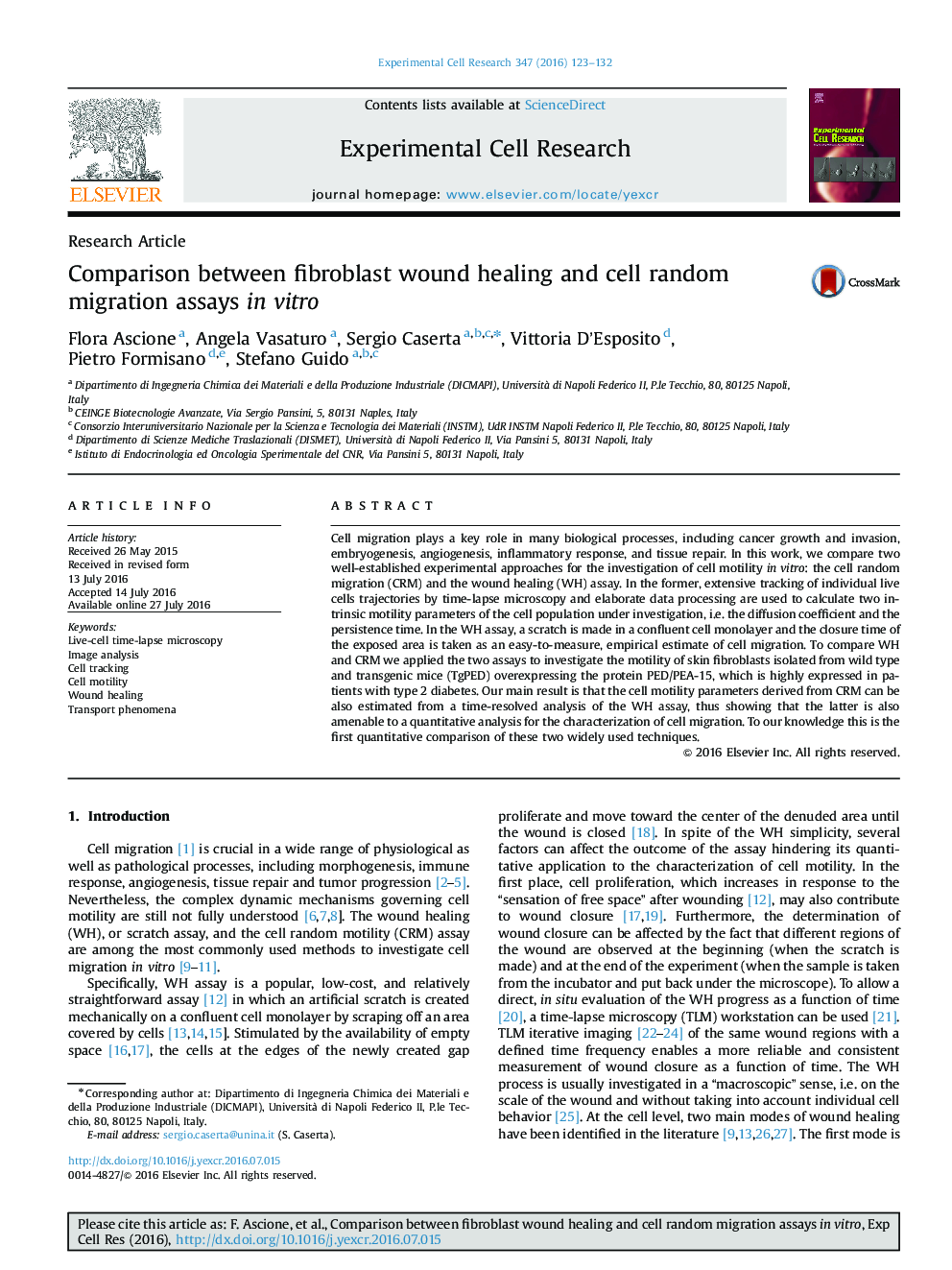| کد مقاله | کد نشریه | سال انتشار | مقاله انگلیسی | نسخه تمام متن |
|---|---|---|---|---|
| 2129891 | 1401567 | 2016 | 10 صفحه PDF | دانلود رایگان |
• We compare single cell random migration (CRM) and wound healing (WH) assays.
• Wound size reduction, cell random and directional motility analyses are used.
• A case study about the influence of PED/PEA-15 on cell motility is considered.
• CRM and WH assays allow to obtain a similar quantitative characterization of cell motility.
• Parameters describing single cell motion can be estimated from the wound healing assay.
Cell migration plays a key role in many biological processes, including cancer growth and invasion, embryogenesis, angiogenesis, inflammatory response, and tissue repair. In this work, we compare two well-established experimental approaches for the investigation of cell motility in vitro: the cell random migration (CRM) and the wound healing (WH) assay. In the former, extensive tracking of individual live cells trajectories by time-lapse microscopy and elaborate data processing are used to calculate two intrinsic motility parameters of the cell population under investigation, i.e. the diffusion coefficient and the persistence time. In the WH assay, a scratch is made in a confluent cell monolayer and the closure time of the exposed area is taken as an easy-to-measure, empirical estimate of cell migration. To compare WH and CRM we applied the two assays to investigate the motility of skin fibroblasts isolated from wild type and transgenic mice (TgPED) overexpressing the protein PED/PEA-15, which is highly expressed in patients with type 2 diabetes. Our main result is that the cell motility parameters derived from CRM can be also estimated from a time-resolved analysis of the WH assay, thus showing that the latter is also amenable to a quantitative analysis for the characterization of cell migration. To our knowledge this is the first quantitative comparison of these two widely used techniques.
Figure optionsDownload high-quality image (287 K)Download as PowerPoint slide
Journal: Experimental Cell Research - Volume 347, Issue 1, 10 September 2016, Pages 123–132
